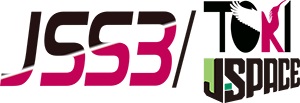Three-dimensional numerical simulation of discharge and flow related to airflow control using plasma actuator
JAXA Supercomputer System Annual Report February 2023-January 2024
Report Number: R23EACA16
Subject Category: JSS Inter-University Research
- Responsible Representative: Naofumi Ohnishi, Professor, Tohoku University
- Contact Information: Naofumi Ohnishi(naohnishi@tohoku.ac.jp)
- Members: Naofumi Ohnishi, Shintaro Sato
Abstract
Plasma actuator has attracted attention as a fluid control device using dielectric barrier discharge. In the experimental study, it has been pointed out that the discharge has a spanwise distribution of the electrode and has a three-dimensional structure. The three-dimensional structure affects the induced flow distribution of the plasma actuator. In this study, we perform the three-dimensional numerical calculation of discharge and flow for verification of airflow control effect of plasma actuator.
Reference URL
N/A
Reasons and benefits of using JAXA Supercomputer System
In the calculation of the discharge phenomenon, it is necessary to solve Poisson’s equation at every time step, and it is solved using a convergence calculation, which calculation cost is high. In addition, since three-dimensional calculations are performed in this research, the required memory capacity is so large, and a supercomputer is necessary.
Achievements of the Year
This year, a three-dimensional numerical simulation of the discharge process in a DBD plasma actuator toward the discharge-flow coupling simulation. The effect of the segmentation of the embedded electrode on the discharge process was investigated. The three-dimensional numerical simulation revealed that the segmentation of the embedded electrode has an important role in determining the discharge structure. The discharge structure has a characteristic length corresponding to the segmentation size. The insight obtained by these numerical simulations contributes to the performance improvement of the DBD plasma actuator. The discharge-flow coupling simulation will be performed in future work.
Publications
N/A
Usage of JSS
Computational Information
- Process Parallelization Methods: MPI
- Thread Parallelization Methods: N/A
- Number of Processes: 8 – 720
- Elapsed Time per Case: 9 Hour(s)
JSS3 Resources Used
Fraction of Usage in Total Resources*1(%): 0.25
Details
Please refer to System Configuration of JSS3 for the system configuration and major specifications of JSS3.
| System Name | CPU Resources Used(Core x Hours) | Fraction of Usage*2(%) |
|---|---|---|
| TOKI-SORA | 6664684.09 | 0.30 |
| TOKI-ST | 31099.49 | 0.03 |
| TOKI-GP | 0.00 | 0.00 |
| TOKI-XM | 0.00 | 0.00 |
| TOKI-LM | 0.00 | 0.00 |
| TOKI-TST | 0.00 | 0.00 |
| TOKI-TGP | 0.00 | 0.00 |
| TOKI-TLM | 0.00 | 0.00 |
| File System Name | Storage Assigned(GiB) | Fraction of Usage*2(%) |
|---|---|---|
| /home | 95.00 | 0.08 |
| /data and /data2 | 16310.00 | 0.10 |
| /ssd | 0.00 | 0.00 |
| Archiver Name | Storage Used(TiB) | Fraction of Usage*2(%) |
|---|---|---|
| J-SPACE | 3.47 | 0.01 |
*1: Fraction of Usage in Total Resources: Weighted average of three resource types (Computing, File System, and Archiver).
*2: Fraction of Usage:Percentage of usage relative to each resource used in one year.
ISV Software Licenses Used
| ISV Software Licenses Used(Hours) | Fraction of Usage*2(%) | |
|---|---|---|
| ISV Software Licenses(Total) | 46.34 | 0.02 |
*2: Fraction of Usage:Percentage of usage relative to each resource used in one year.
JAXA Supercomputer System Annual Report February 2023-January 2024


